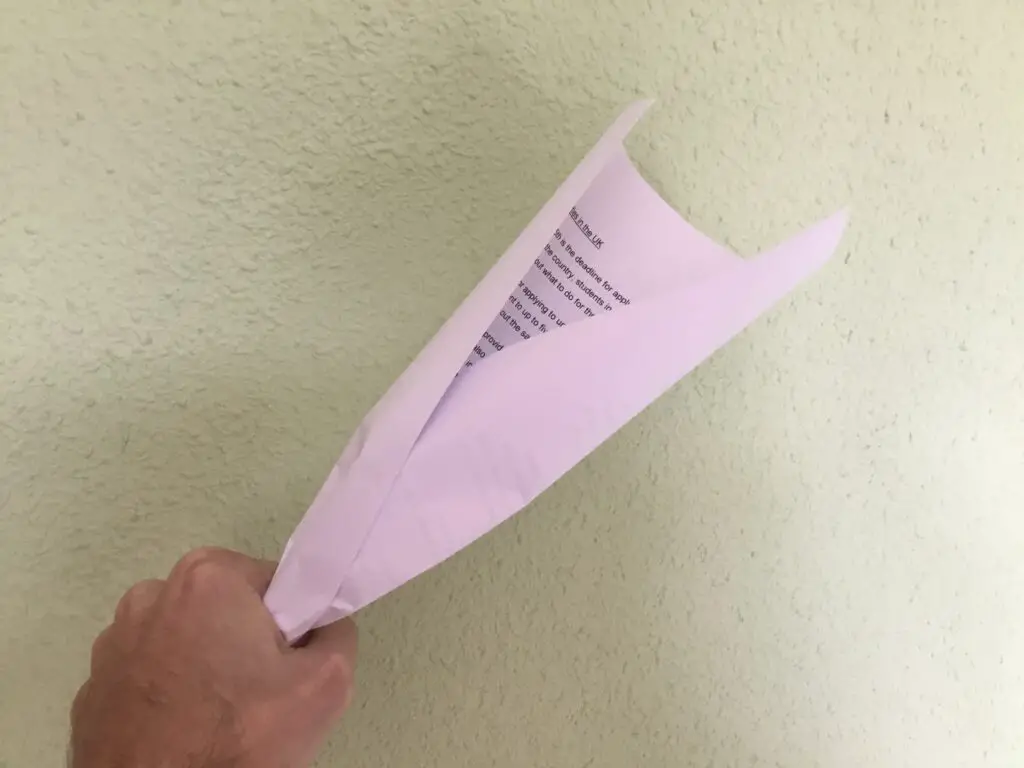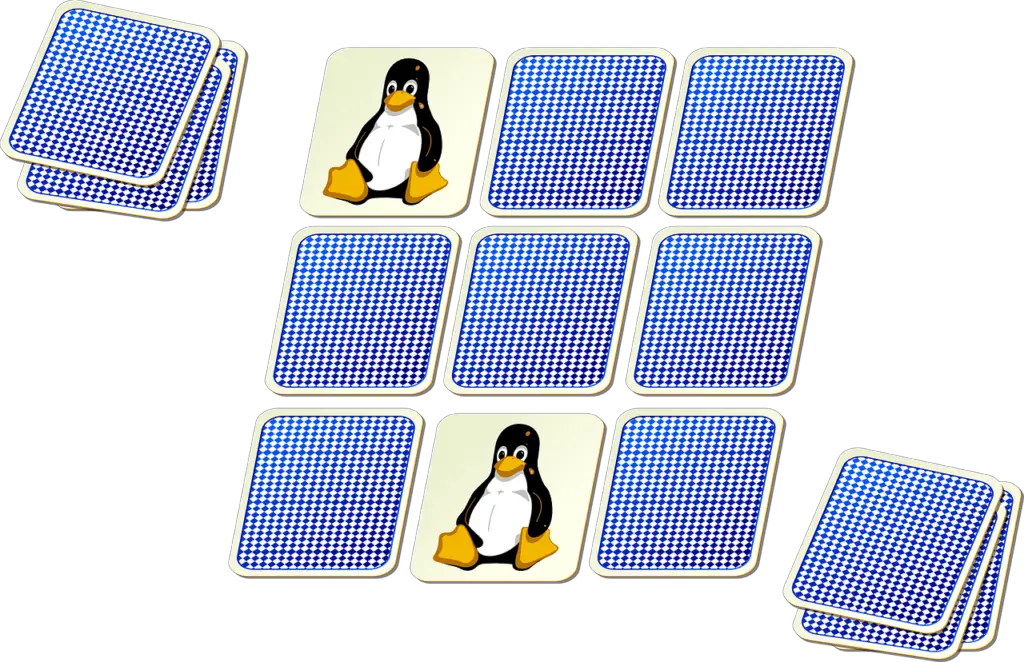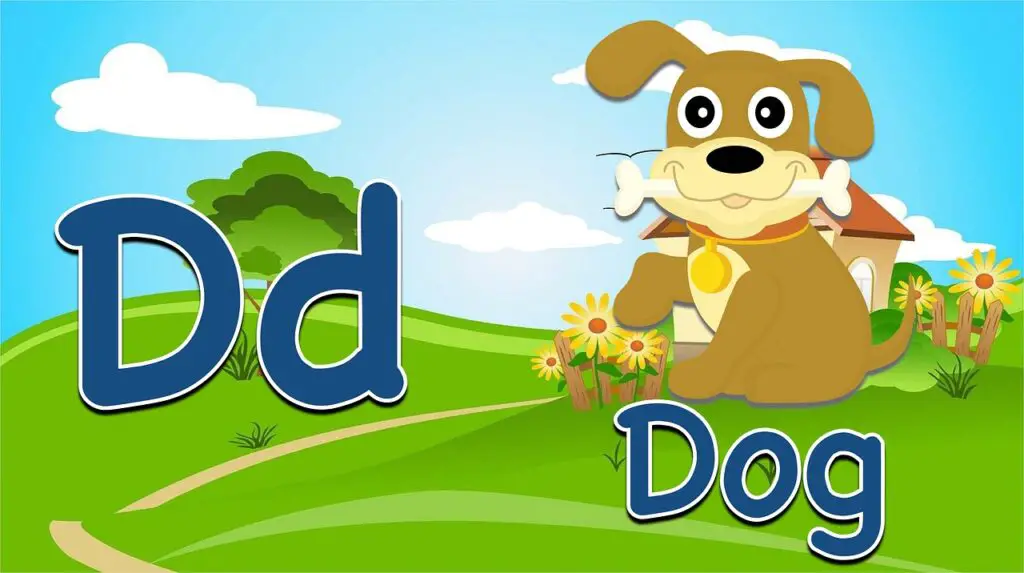Flashcards are a staple of EFL/ESL teaching. Whether you’re teaching phonics and the alphabet, or expanding students’ vocabulary, not only are they great for introducing new language, but you can use them in a variety of fun games.
And that’s what this list is all about! We’ll look at 9 of the best tried-and-tested flashcard games that are sure to get your class engaged and learning.
Flashcards are generally used with younger learners and beginners. However, you can still use them with older and advanced students, and some entries in this list have variations for a more challenging experience.
Before we get started, it’s worth defining the two types of flashcard we’ll be using.
- Double-sided. On one side is an image, on the other is the corresponding word in English.
- Single-sided. One side is blank, while the other side has either an image, a word, or both.
For most games, it doesn’t matter which you use. However, some only work with a certain type, so check you have the right ones before starting.
Flashcards are best used for memorising vocabulary, phonics, letters and numbers. To learn about how I teach vocabulary effectively, read my big article: Best Method to Improve EFL/ESL Students’ Vocabulary: 9 Steps.
If you want to make your own flashcards, I recommend printing off appropriate images and words and putting them inside plastic wallets, then taping over the top. This saves buying expensive flashcard packs and lets you customise what words your students learn (especially useful for more advanced groups).
Without further ado, let’s get to the list!
- Swat the Word
- Circle Chaos
- Go Fish
- Random Story Builder
- Who Am I? / What Am I?
- Hot Seat
- What’s Changed?
- Touch Race
- Pairs (and Advanced Pairs)
The games in this list are just the tip of the iceberg. I’ve got so many more for you, including 20 games in a free ebook that you can get right now.
When you sign up to the Enchanted ESL Newsletter, you get the ebook for free, plus monthly updates with new games, role-play scenarios and lesson plans. Yes, all of it for free!
1. Swat the Word
One of my favourite games with students of all ages. You can play it on the board, by sticking the flashcards to it with sticky tack, or put them on a table, or even on the floor.
You can play with single-sided or double-sided flashcards. With double-sided you can change which side is visible to the students when they play.
Estimated time: 15-20 minutes
Materials: Single-sided/double-sided flashcards with vocabulary. Fly swats OR rolled up sheets of paper
Group size: 2+
Level: Beginner and Intermediate (although advanced students can still enjoy it)
If you have access to fly swats and you can trust your students not to be silly with them, they’re a great option. If not, students can use a rolled-up sheet of paper (like in the picture below) or just their hands.

How to play
Arrange approximately 20 flashcards so they’re all separate and visible. Two students play at the same time.
The teacher describes one of the words. Students have to “swat” the correct flashcard first to win a point. If they swat an incorrect flashcard, they are eliminated and the other student can take their time to swat the correct one.
Pushing, blocking, or any other physical contact is illegal and should result in instant elimination.
TIPS:
- If you have a class with more than 5 students, split them into two teams and have each team send a representative to compete against the other. After each round, change the representative.
- Don’t remove flashcards even if they’ve already been swatted.
- Be careful with word descriptions. It’s best to play with related vocabulary that has multiple options, e.g. “It’s an animal with four legs…”, “it lives in the jungle”, “and it’s orange and black”. Each part of the description gives an extra clue and narrows it down. This means the students have to listen well.
- With lower-level students, say the descriptions slowly with lots of pauses. If they’re real beginners, you may want to skip the description and just say the word.
- Get more advanced students to do the describing instead of you.
2. Circle Chaos
This game is fantastic for learning new vocabulary, with lots of repetition of the words. It starts relatively relaxed, but you can increase the intensity to make it a challenging and exciting experience.
Estimated time: 5-15 minutes
Materials: Single-sided/double-sided flashcards with vocabulary, phonics, letters or numbers
Group size: 6+
Level: Beginner and Intermediate
This game involves passing the flashcards around a circle at speed. Make sure the flashcards you’re using are durable enough to survive some rough treatment. Even with strong cards, encourage students to be careful with them.
How to play
Organise the class into a standing circle. You, the teacher, should also be part of the circle. Show the students a flashcard, say the word/letter/number loudly a few times and get students to shout it back.
Pass the flashcard to the person to your left. They shout the word/letter/number on the flashcard, then pass it to their left. Keep going until it has gone all the way around the circle. Encourage students to do this at a fast pace.
Repeat this a few times with different flashcards. When students are familiar with some of the words, add a second flashcard while the first one is still going around the circle.
Add more and more flashcards so multiple are going around the circle at once. Pass some around in the opposite direction.
Keep going like this until things get so chaotic students can’t keep up any longer.

TIPS:
- Use the initial slow rounds as an opportunity for students to practice pronouncing words.
- Take your time adding flashcards. Let the intensity and difficulty slowly build.
- At some point, it’ll be hard for you to monitor if students are saying the words correctly as several students will be shouting at the same time. It’s chaotic and fun, but can’t last too long as the focus will soon switch away from the vocab. When moments like that arrive, slow the pace.
- Some classes might enjoy a time-trial challenge. How quickly can they get one flashcard around the circle? What about two, or three?
3. Go Fish
Go Fish is traditionally played with a 52-card deck of standard playing cards, but it’s quite easy to adapt it to practice vocabulary with flashcards.
You need to make four copies of 13 flashcards, each small enough to hold in the hand. They must be single-sided. If you make them out of paper, it’s hard to play the game as they’re harder to separate. Thick paper or card is best. You could stick paper printouts onto standard playing cards.
Estimated time: 15-20 minutes
Materials: 4 copies of 13 small, single-sided flashcards with vocabulary
Group size: 3-6
Level: Beginner and Intermediate
Not only does this game practice vocabulary, but it’s great for asking and answering questions with structures like, “Do you have any ______?”
The rules aren’t difficult, but they’re quite long, so instead of writing them all out, here’s a super-helpful video. All you have to do is change the standard playing cards with your own flashcards.
With children, it’s important to emphasise the importance of honesty. They must give all the cards they have if asked for them, otherwise it’s cheating.
TIPS
- Instead of having 4 identical copies of each word, you could have 4 variations of an idea. For example, if you’re learning about sports, you could have a set of four racket sports (badminton, tennis, squash and paddle tennis). Just make sure it’s clear which set each card fits into.
- Use the video as listening practice for your students while they learn the rules.
For more fantastic ways to use standard playing cards in EFL/ESL lessons, check out my article: 9 Fun EFL/ESL Games & Ideas With Standard Playing Cards
4. Random Story Builder
Flashcards are great for quick recognition and memorisation without context. But you can go further and get students to start using those words in a more sophisticated way, building mini-narratives with the words they’re given and understanding the vocabulary on a deeper level.
The more flashcards you have in this activity, the better. Consider mixing different sets to give greater variety and interest.

Estimated time: 15-30 minutes
Materials: Single-sided/double-sided flashcards with vocabulary
Group size: Any
Level: Intermediate and Advanced
This activity is not for beginners. As a minimum, students need to be able to comfortably construct simple sentences, and ideally be able to link them without too much difficulty.
How to play
Mix the flashcards into a random pile. Choose a student to draw 3-5 flashcards from the pile (more cards = more challenging).
Students come up with a short story using those words. They can either write the stories or say them out loud. The stories must use all the words, and should be short and concise, rather than going off topic.
TIPS
- If you have a large class, you can get all students to write a short story, then share with a partner. Having all students say their stories aloud will take too long and get boring, so if you want to make it a speaking activity, just have the student who drew the cards say the story.
- Alternatively, with a big class, split them into groups of 3-4 and have them share their stories together.
- To challenge students, make them use the words in the order they were taken from the pile.
- For a collaborative game, put students in groups that are the same size as the number of cards drawn. Each student contributes a sentence to the story using one of the words.
- Let stories be creative and silly, as long as they stay respectful.
- If you’re practicing a particular tense, you can make a rule that the story must be told in that tense.
5. Who Am I? / What Am I?
A classic EFL/ESL flashcard game which is right at home here on this list. The rules are simple enough for young students to understand, and you can use it to practice asking questions, too.
Estimated time: 5-20 minutes
Materials: Single-sided flashcards with vocabulary (ideally all of one category that students are familiar with)
Group size: Any
Level: All levels
How to play
Choose one student and secretly give them a flashcard. They mustn’t show it to anyone.
Other students take turns to ask yes/no questions to determine what is on the flashcard. The student with the flashcard must answer with “yes” or “no” as best they can.
If a students asks “Are you X?” and X is what is on the flashcard, they got it correct. Now they can be the person with the flashcard.
However, if X is incorrect, they are eliminated from the round and can’t ask any more questions about that flashcard.

TIPS
- With a large class, this game is a little boring for students who can’t ask questions. I recommend dividing the class into groups of 6-10 and playing a few games simultaneously.
- Determine a clear order when asking questions. Don’t choose students by putting their hands up as some students will dominate and others will disappear.
- Make it a collaborative game. Instead of students trying to get the right answer before everyone else, set a challenge for the group to guess the word in as few questions as possible, then randomly choose who goes next.
- Take part and introduce different types of question.
6. Hot Seat
Another EFL/ESL classic that nearly every teacher has used at some point. It’s fun, fast, and challenging.
Estimated time: 20-30 minutes
Materials: Single-sided/double-sided flashcards with vocabulary (ideally all of a category that students are familiar with), a timer
Group size: 2+
Level: Intermediate
This game isn’t suitable for absolute beginners and might be a little basic for advanced students. It’s ideal for those who have enough language to give context to a word without saying it.

How to play
Divide students into groups of 3-5. Only one group can go at a time, but if you have two teachers in the class, you can run two groups at the same time with each teacher refereeing one group.
One student sits in the Hot Seat. They will not see what is on the flashcards, but have to guess what it is from the clues the other students give them. Mix a pile of flashcards so they’re in a random order.
Set the timer for 1 minute and shout GO!
The other students look at the top flashcard on the pile and shout out clues. They are NOT allowed to say the word on the flashcard, or any form of that word. For example, if the word is “play”, they can’t say “playing” or “player”.
When the student in the Hot Seat says the correct word, award a point and move on to the next flashcard. The aim is to get as many points before the time runs out.
TIPS
- Set rules for passing a word. I’ve found students immediately pass words they think are challenging and only do the easy ones. I recommend deducting one point for each word passed to encourage them to try harder, but still give them the option to skip words they can’t communicate.
- Referee the clue-givers carefully. They will try to cheat, by mouthing or whispering the word. Deduct a point if they do this and keep groups small so it’s easier to monitor.
- Set a longer time limit to ease the pressure and make it a more thoughtful game. However, if you have lots of groups to get through, a shorter time means everyone gets a turn to sit in the Hot Seat.
7. What’s Changed?
I usually play What’s Changed with physical items in the classroom, but you can have an equally valuable experience with flashcards.
Estimated time: 5-15 minutes
Materials: Single-sided/double-sided flashcards with vocabulary/letters/phonics/numbers
Group size: Any
Level: Beginner and Intermediate
You need a relatively large space to move flashcards around, or at least a way of attaching the flashcards to the wall so they can be in a variety of different places.
How to play
Place flashcards around the room in different positions and orientations. Choose one student to be the Identifier. They should take a good look at where all the flashcards are.
The Identifier goes out of the room. The rest of the students change the location and orientation of some of the flashcards. All flashcards should be clearly visible (not hidden inside bags or cupboards etc.)
The Identifier comes back into the room and has to identify what has changed.
Set your expectations according to your students’ level. Beginners may just point and say the word on the flashcard, but intermediate students should make full sentences and describe in as much detail as possible how things have changed, like “the police officer is upside down and under the blackboard”.
TIPS
- Don’t change too much. Aim to only change 5-10 flashcards, otherwise the Identifier is going to get overwhelmed with all the new changes.
- If you have a large class, consider choosing two or three Identifiers at the same time.
- With a large class, choose individuals to change one flashcard, one at a time. This avoids complete chaos as students rush around moving everything and lets you control how much is changed.
What’s Changed is one of those games you can play in the few minutes at the start or end of a class. For more quick games like it, check out my article: 9 EFL/ESL 5 Minute Games Every Teacher Needs to Know.
8. Touch Race
This is a great, active game for young learners, getting them on their feet and listening. It’s simple to play, but requires a relatively large open space without dangerous objects to collide with. If you don’t have this, you can play a reduced-scale version.
Estimated time: 5-15 minutes
Materials: Single-sided/double-sided flashcards with vocabulary/letters/phonics/numbers
Group size: 1-6
Level: Beginner
I’ve set the group size at between 1 and 6 students. You can play with slightly bigger classes, but with too many students, it can get dangerous as so many of them are rushing around. If you want to play with a large class, split them into groups which take turns playing while the others can help by pointing.

How to play
Put lots of flashcards around the room. Sticking them to the walls and floor is the best option. Make sure they’re clearly visible and accessible without obstruction or danger. If you have tables and chairs, move them to the side to create an open space.
Students start in the middle of the room. Shout the word on one of the flashcards. Students should run to the corresponding flashcard and touch it as quickly as possible.
TIPS
- Challenge students by instructing them how they should get to the flashcard. For example, you could say “hop to the bottle of milk” or “crawl to the bananas”.
- Avoid awarding points for the student who reaches the flashcard first. It can get too competitive, which isn’t ideal in such a physical game. Also, the fastest student already has the reward of feeling the smartest and fastest.
- When students are confident with the vocab, let them be the ones to shout the words for the others to race to.
- If you can, play outside!
9. Pairs (and Advanced Pairs)
Pairs, also known as concentration, is another popular EFL/ESL flashcard game. I’m not the biggest fan of it in its standard form, because it focuses less on learning English words than it does on spatial memory. But with a few variations, we can change this and make it suitable for advanced learners, too.
Estimated time: 10-20 minutes
Materials: 2 copies of single-sided flashcards with vocabulary
Group size: 1-4
Level: All levels
Flashcards MUST be single-sided. You need matching pairs, ideally one with the written word and the other with a picture (although you can still play if they’re both words or both pictures).

How to play
Mix up the flashcards and place them face down on the table or floor so they’re all separate and not overlapping.
Students take it in turns to turn over two flashcards, hoping to find a matching pair. When they turn over a card, they should say the word on it out loud.
With beginners and young children, students continue like this until they find a matching pair. When they do, they take both cards and score one point. When all the pairs have been found, the student with the most points wins.
Advanced rules
In this variation, each student has a maximum of three attempts per turn.
If they turn over two cards which match, they take those cards out of the game and score a point. Their turn ends immediately.
If the two cards don’t match, they have the opportunity to keep their turn going. Depending on the capabilities of your students and what kind of language you want to practice, choose one of the following options.
1. Make a coherent sentence/story using the words on both cards. “The guinea pig escaped its cage and went to live with the gerbils.”
2. Make a clear comparison or distinction between the words on both cards. “Guinea pigs are bigger than gerbils and have shorter tails.”
3. Give an opinion or state a preference about the words on both cards. “I’d prefer a pet gerbil because they’re easier to look after. Guinea pigs are cute, but need more space.”OR, think of another challenge suitable to your students’ abilities.
If students complete the challenge, they earn another attempt at finding a matching pair. Once they have had THREE unsuccessful attempts, their turn ends.
TIPS
- Challenge advanced students with difficult vocabulary by getting them to link, compare, express opinions, and discuss the words they turned over.
- For extra conversation, have students play with a partner. To earn another attempt, they should create a sentence or have a conversation together about the two non-matching words.
- You have to judge whether students pass the challenge. In most cases, if they make a good effort to communicate, they should succeed, even if there are errors.
Conclusion
By reading this article, I hope you can see how flashcards can be used in a multitude of different ways, not just for repetitive drills. Perhaps not all of these 9 are suited for your particular group, so cherry pick the best ones.
And there are plenty more games and activities you can do beyond the ones here. Some you can invent yourself, and others you can find elsewhere, for example the 20 games in my free ebook which you can get by signing up to the Enchanted ESL Newsletter.
Not only will you get the free 20 games ebook, but you’ll get access to a bunch of other resources, monthly role-play scenarios and lesson plans. All at no cost at all!
If you’re looking for more games and activities, check out my other lists:
9 EFL/ESL Speaking Games & Activities Perfect for Beginners
9 EFL/ESL Games & Activities for Intermediate Learners
9 EFL/ESL Games and Activities for Advanced Learners
9 High Energy EFL/ESL Games for Boosting Vocabulary
9 Engaging Homework Ideas for EFL/ESL: No worksheets!
9 Exciting EFL/ESL Activities for Writing & Spelling
9 Fun EFL/ESL Games & Ideas With Standard Playing Cards
9 EFL/ESL Games With No Materials or Preparation Needed
9 EFL/ESL 5 Minute Games Every Teacher Needs to Know
9 Superb EFL/ESL Games & Activities Using Just Pen & Paper
9 Classy EFL/ESL Games & Activities for Adults (+ tips)
9 Confidence-Boosting EFL/ESL Speaking Games for All Levels
9 Exciting Flashcard Games for EFL/ESL Classes










